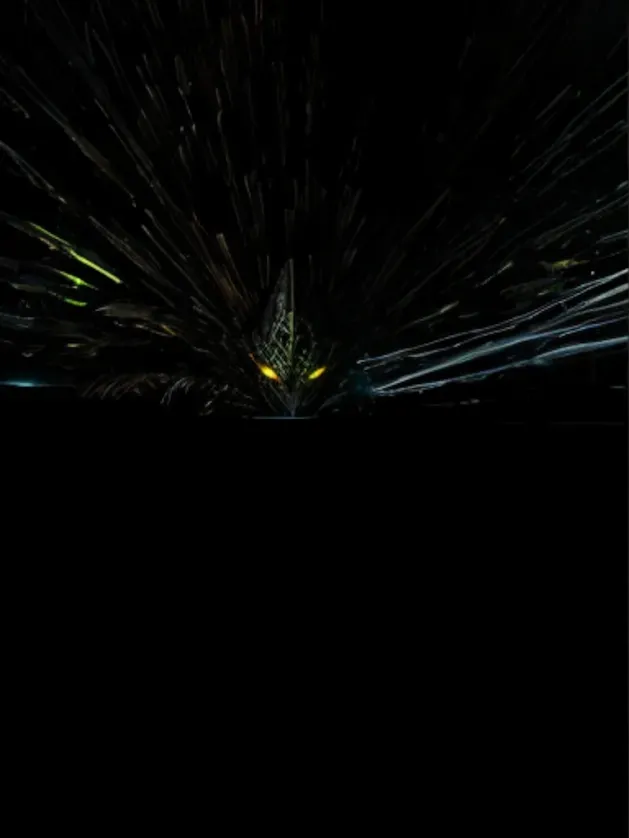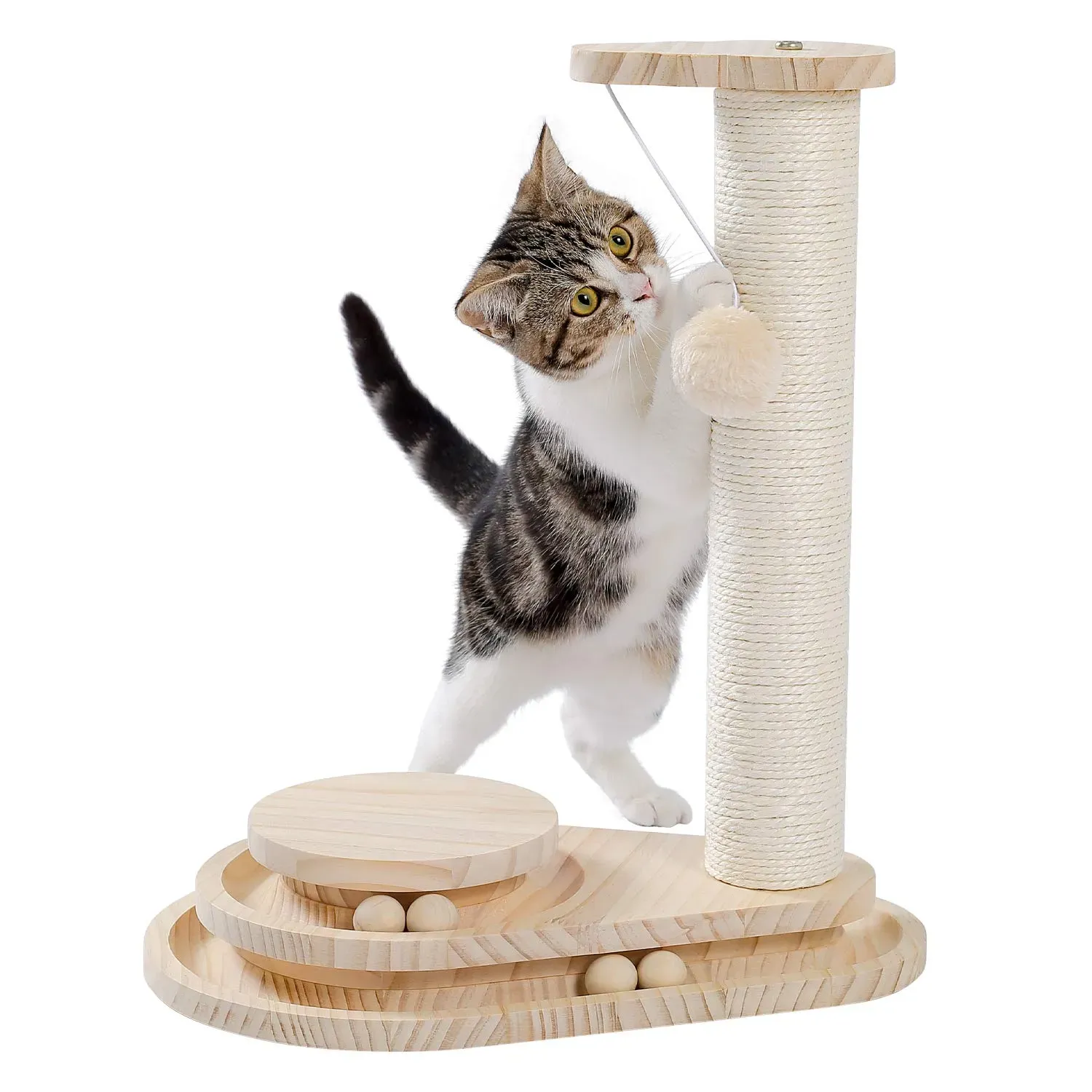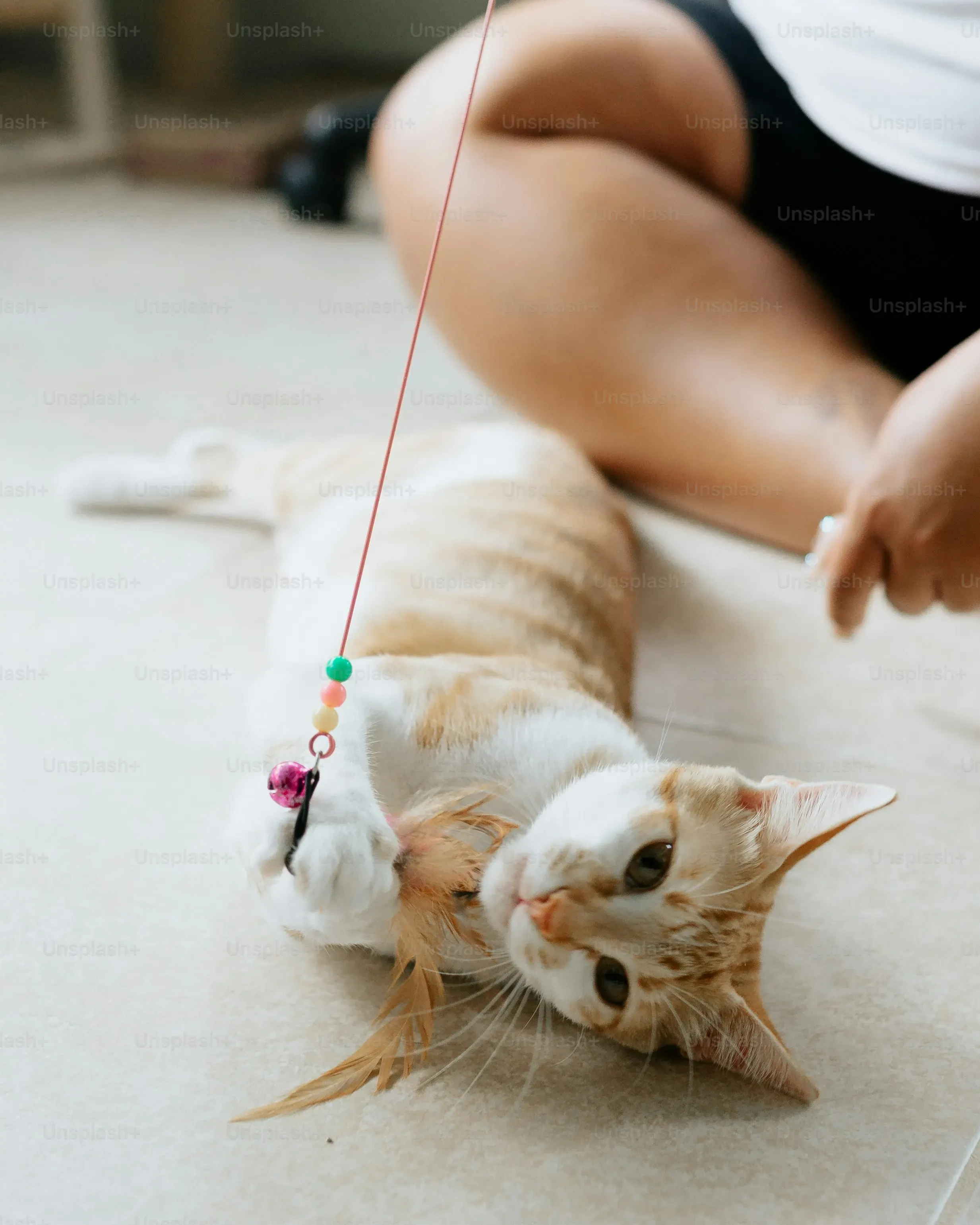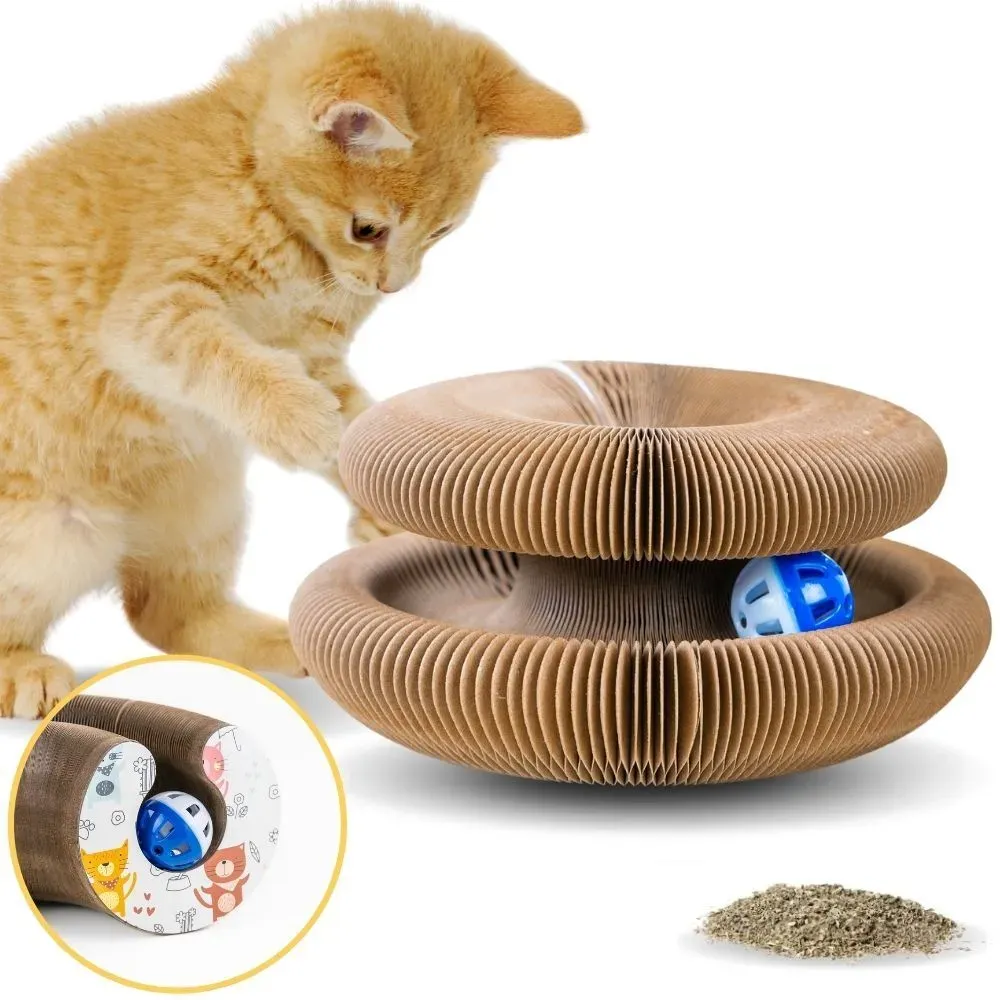Table of Contents
Let's be honest. You love your cat, but maybe you don't love the artwork they're creating on your sofa. Those shredded corners and pulled threads? That's not malice; it's just a cat being a cat. Scratching is a natural, essential behavior for felines. They do it to mark their territory, stretch their muscles, relieve stress, and keep those claws in tip-top shape.
Why Your Cat Needs the Best Cat Scratching Toys

Why Your Cat Needs the Best Cat Scratching Toys
so you've got a cat, right? And maybe you've noticed them sharpening those little daggers on your favorite armchair. Before you despair, understand this: scratching isn't spite. It's vital. Think of it as their daily ritual. They need to shed the outer layer of their claws – like peeling an onion, but way sharper. This keeps their claws healthy and ready for action (even if that action is just batting a dust bunny). Plus, it's a massive stretch for their back and shoulders. Imagine waking up stiff and unable to stretch properly; that's kind of how a cat feels without a good scratch. They're also leaving their scent and visual markers – basically, putting up a "I live here!" sign. And yeah, it's a fantastic stress reliever. A good, vigorous scratch is basically cat therapy. This is precisely Why Your Cat Needs the Best Cat Scratching Toys; they absolutely *must* scratch, and you'd much rather they do it on something you bought for them than something you paid rent or mortgage for.
How to Pick the Best Cat Scratching Toys for Your Feline Friend

How to Pick the Best Cat Scratching Toys for Your Feline Friend
Consider Your Cat's Scratching Style
so you're ready to invest in something that isn't your sofa. Great! But before you just grab the first cardboard thing you see, take a minute to observe your cat. How do they like to scratch? Do they stand tall and reach up a doorframe or the side of a chair? That's a vertical scratcher kind of cat. Or do they prefer to crouch down and shred a rug or the carpeted stairs? That sounds like a horizontal scratcher enthusiast. Some cats, bless their adaptable little hearts, like both! Pay attention to where they're currently scratching (sorry about that armchair again) and the angle they use. This gives you a massive clue about what type of scratcher they're likely to adopt. Getting this right is the first crucial step in finding the best cat scratching toys for *your* specific feline.
Size, Stability, and Placement Matter
Nobody likes a wobbly scratching post. Especially not a cat trying to get a good grip and pull with all their might. A flimsy scratcher is not only ignored, but it can also be dangerous. You need something heavy and stable enough that it won't tip over when your cat launches themselves at it. For vertical scratchers, height is key. Your cat needs to be able to fully extend their body upwards while scratching. We're talking at least 25-32 inches tall for an average adult cat. Horizontal scratchers should be long enough for them to stretch out comfortably. Placement is just as vital as the scratcher itself. Put it where your cat *already* likes to scratch, or in a prominent, high-traffic area. Don't hide it away in a corner. Cats scratch to mark territory, remember? They want their "I live here!" sign visible.
- Observe scratching posture: Vertical (stretching up) or horizontal (on the floor)?
- Measure their full body stretch to ensure adequate height/length.
- Check for a heavy, stable base that won't wobble or tip.
- Place scratchers in areas where the cat spends time or currently scratches.
- Consider multiple scratchers if your cat has different preferred spots or angles.
Material and Durability: What Are Claws Made Of?
Cats have strong opinions about texture. The most popular materials for the best cat scratching toys are sisal rope, sisal fabric, and corrugated cardboard. Sisal, whether rope wrapped tightly around a post or flat on a pad, is durable and provides a satisfying shredding experience that cats seem to love. It mimics tree bark, a natural scratching surface. Corrugated cardboard is another hit, often found in horizontal pads or angled scratchers. It's less durable than sisal but often more affordable, making it a good option for trying out preferences or placing in multiple locations. Avoid plush carpeted scratchers that feel too similar to your actual carpet – that's just confusing for everyone involved. Look for tightly wound sisal or dense cardboard that won't fall apart after a few sessions. Durability means you won't be replacing it every week, saving you money and hassle in the long run.
Top Contenders: Our Picks for the Best Cat Scratching Toys

Top Contenders: Our Picks for the Best Cat Scratching Toys
The Reigning King of Vertical Scratchers
Alright, so you've figured out your cat is a vertical shredder. They stand tall, stretch way up, and really dig in. For these aspiring tree-climbers (or sofa-climbers, currently), you need a serious post. Forget those flimsy, carpeted things that wobble if a fly lands on them. We're talking about the kind of scratcher that stands its ground. The Pioneer Pet SmartCat The Ultimate Scratching Post is often mentioned as a top-tier choice, and for good reason. It's tall – usually around 32 inches – allowing even large cats to get a full, satisfying stretch. It's covered in durable, natural sisal rope, which provides excellent grip and withstands heavy use. The base is wide and sturdy, meaning it won't tip over and scare your cat away from scratching forever. Investing in a solid vertical post like this is often the first step in redirecting that destructive energy onto something appropriate. It's built tough because, let's face it, cats are tough on their toys.
Horizontal Heroes and Cardboard Champions
Not all cats aspire to vertical dominance. Some are ground-level operators, preferring to sink their claws into flat surfaces. If your cat is currently obsessed with your rugs or the carpeted stairs, a horizontal scratcher is your best bet. These often come as flat pads, ramps, or angled boards. Corrugated cardboard scratchers are hugely popular here, offering a satisfying shredding texture that many cats find irresistible. They're also generally more affordable than sisal posts, making them a good option for placing in multiple rooms. Look for dense, tightly packed cardboard that doesn't disintegrate after one enthusiastic scratch session. Some options, like the Catit Style Scratcher (Urban Bench), offer a curved or angled surface which some cats prefer. While cardboard won't last as long as sisal, its appeal and lower cost make it a strong contender among the best cat scratching toys, especially for horizontal scratchers or for trying out different textures.
Scratcher Type | Ideal For | Common Materials |
|---|---|---|
Vertical Post | Cats who stretch upwards to scratch | Sisal rope, sisal fabric |
Horizontal Pad/Board | Cats who scratch on flat surfaces | Corrugated cardboard, sisal fabric |
Scratching Tree/Condo | Cats who like height, climbing, and multiple surfaces | Carpet, sisal rope, wood |
Beyond the Basics: Alternative Cat Scratching Toys

Beyond the Basics: Alternative Cat Scratching Toys
Climbing Structures and Cat Trees
Sometimes a simple post or pad just doesn't cut it. Some cats are vertical adventurers who crave height and multiple scratching surfaces. If your cat is scaling your curtains or launching themselves onto high shelves, they might be telling you they need a scratching tree or a multi-level condo. These aren't just scratchers; they're feline playgrounds that combine scratching areas with climbing platforms, perches, and hiding spots. Look for trees with sisal-wrapped posts on various levels and sturdy platforms your cat can comfortably land on. My own cat, a fluffy terror named Loki, ignored every floor scratcher until I got him a moderate-sized tree. Now, he uses the highest perch as his throne and attacks the sisal posts with impressive vigor. It's a bigger investment, sure, but it satisfies multiple instincts – scratching, climbing, and surveying their kingdom from on high.
Wall-Mounted Wonders and Scratching Ramps
Space an issue? Or maybe your cat has a particular spot on the wall they've decided is *the* place to scratch? Wall-mounted scratchers can be a game-changer. These are typically flat pads or boards covered in sisal or cardboard that you attach directly to a wall or even the side of furniture. They keep the scratcher off the floor, which can be great for small spaces, and offer a stable vertical surface. Scratching ramps are another interesting alternative. These are angled boards, often covered in carpet or sisal, that provide a different angle of attack for scratching. Some cats prefer the incline over a purely vertical or horizontal surface. It's all about offering variety and seeing what resonates with your specific cat's preferences. Don't be afraid to experiment; sometimes the oddest-looking scratcher is the one they fall in love with.
- Wall-mounted scratchers save floor space and offer a stable vertical option.
- Scratching ramps provide an angled surface some cats prefer.
- Combining different types of scratchers (post, pad, ramp, tree) offers maximum appeal.
- Consider scratchers made from different materials like wood or natural fibers beyond sisal and cardboard.
- Observe which textures and angles your cat uses most often to guide future purchases.
Interactive and Novelty Scratchers
Beyond the standard formats, there's a world of novelty scratchers designed to pique a cat's curiosity. Some combine scratching surfaces with embedded toys, balls in tracks, or hidden compartments. While these might not be the primary heavy-duty scratchers, they can add an element of play and engagement, encouraging your cat to interact with the scratching surface in different ways. Think scratching pads shaped like animals, or cardboard boxes with scratching inserts that double as temporary forts. These can be great for adding novelty to their environment and keeping things interesting. Just make sure the core scratching surface is still durable and appealing – the bells and whistles are just bonus features.
BudgetFriendly Options: Finding Affordable Best Cat Scratching Toys

BudgetFriendly Options: Finding Affordable Best Cat Scratching Toys
You Don't Need to Break the Bank
Look, nobody wants to spend a fortune on something their cat might just ignore anyway. The good news? Finding effective, budget-friendly options for the best cat scratching toys is totally possible. You don't need some diamond-encrusted cat tree (though I'm sure someone sells one). The goal is to offer a surface and angle your cat prefers, and you can often achieve that without emptying your wallet. We're talking smart choices, not just cheap ones. It's about getting the most bang for your buck, or rather, the most shred for your scratcher.
Cardboard is Your Friend
One of the most popular and consistently affordable types of scratchers is corrugated cardboard. These come in various shapes – flat pads, angled ramps, even little boxes they can hide in. While they won't last forever (your cat's mission is destruction, after all), they offer that satisfying shreddy texture many felines adore. You can often find multi-packs or larger pads for under $20. They're lightweight, easy to move around, and you can scatter them in different spots to give your cat options. Just be prepared for the cardboard confetti; it's part of the experience. Think of it as festive décor.
- Look for multi-packs of cardboard pads.
- Check discount pet supply stores or online retailers.
- Consider DIY options using sturdy cardboard boxes (though commercial ones are often denser).
- Keep an eye out for sales on basic sisal posts.
- Remember, multiple cheap scratchers might be better than one expensive one if placed strategically.
Making Affordable Options Last
So you've snagged a few budget-friendly best cat scratching toys. How do you make them last longer? For cardboard, rotate them. Once one side is shredded, flip it over. When both sides are done, some can be flipped end-for-end or even stacked. For basic sisal posts, check if the sisal wrapping is replaceable. Some manufacturers sell replacement rope or sleeves. You can also try sprinkling a little catnip on a new or ignored scratcher to make it more appealing. The key is consistency and offering attractive alternatives *before* the sofa becomes the go-to spot. A little effort in maintenance and placement goes a long way in maximizing the life of those less expensive options.
Saving Your Sofa, One Scratcher at a Time
So, we've covered why your cat needs to scratch and what makes a good scratcher stand out from the crowd. Finding the absolute "best" cat scratching toys isn't about a single magical product for every cat; it's about observing your own feline's preferences. Do they stretch high against a doorframe? A tall vertical post is probably your winner. Do they attack the rug? A horizontal pad is worth a shot. It might take a little trial and error, maybe even trying a couple of different materials or styles. But getting it right means a more content cat, fewer accidental (or not-so-accidental) attacks on your belongings, and ultimately, a more peaceful coexistence. Your furniture will thank you.